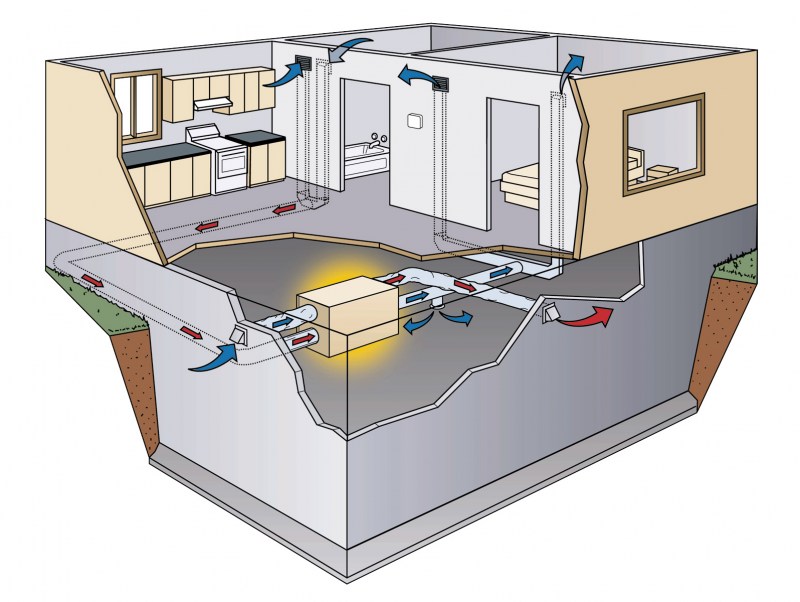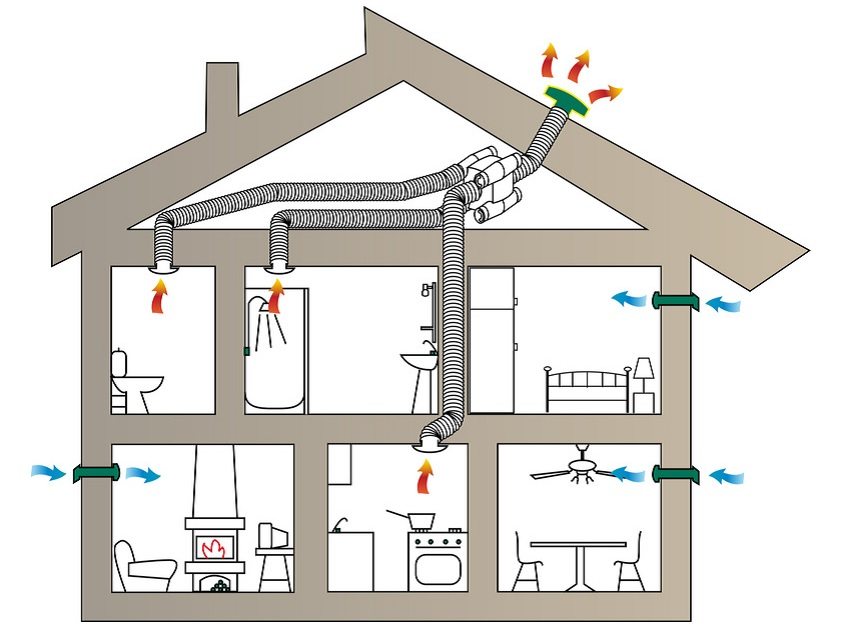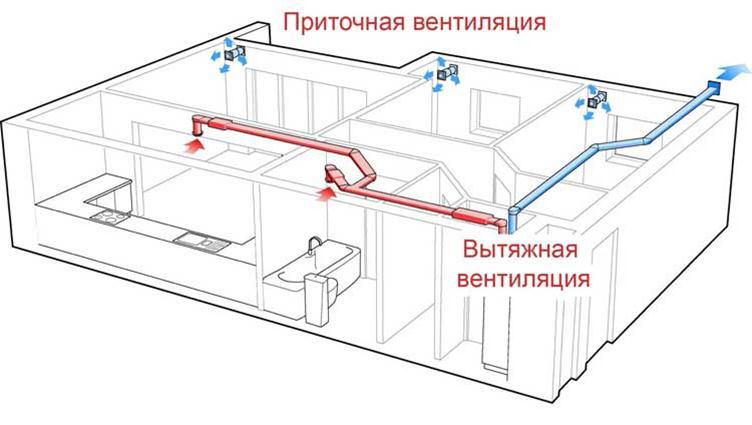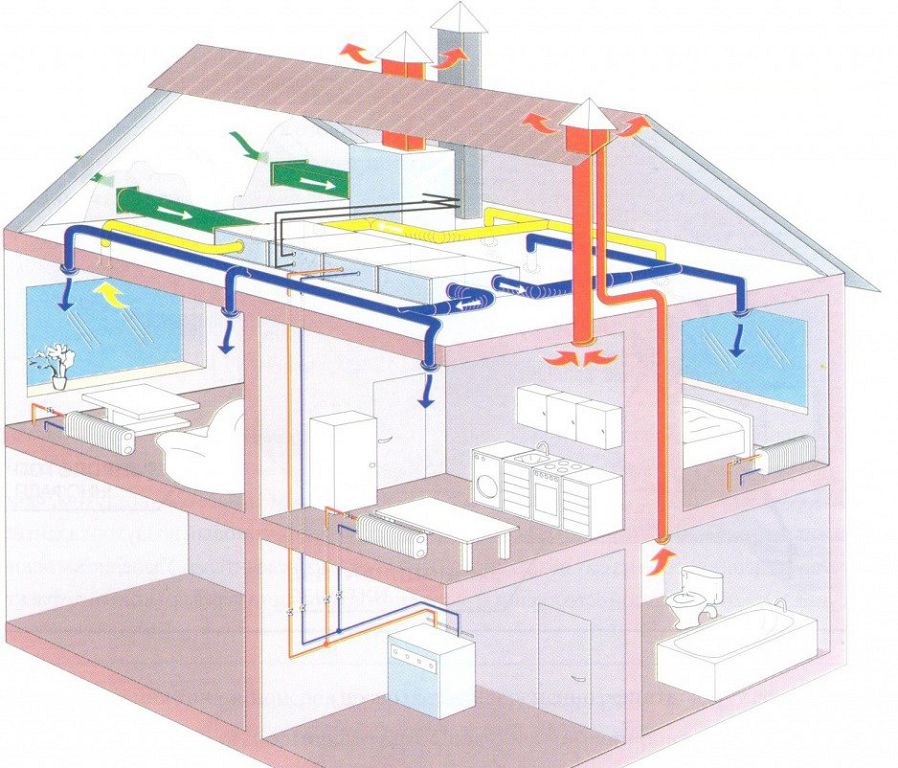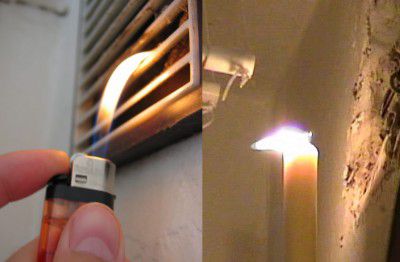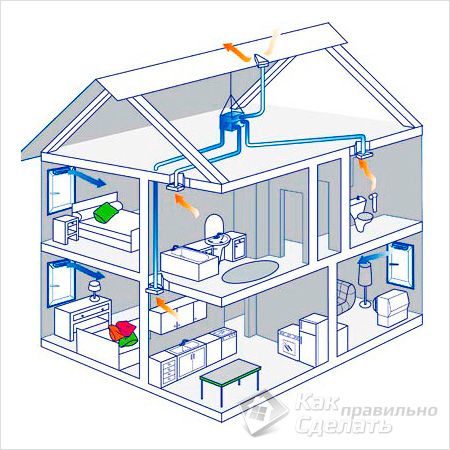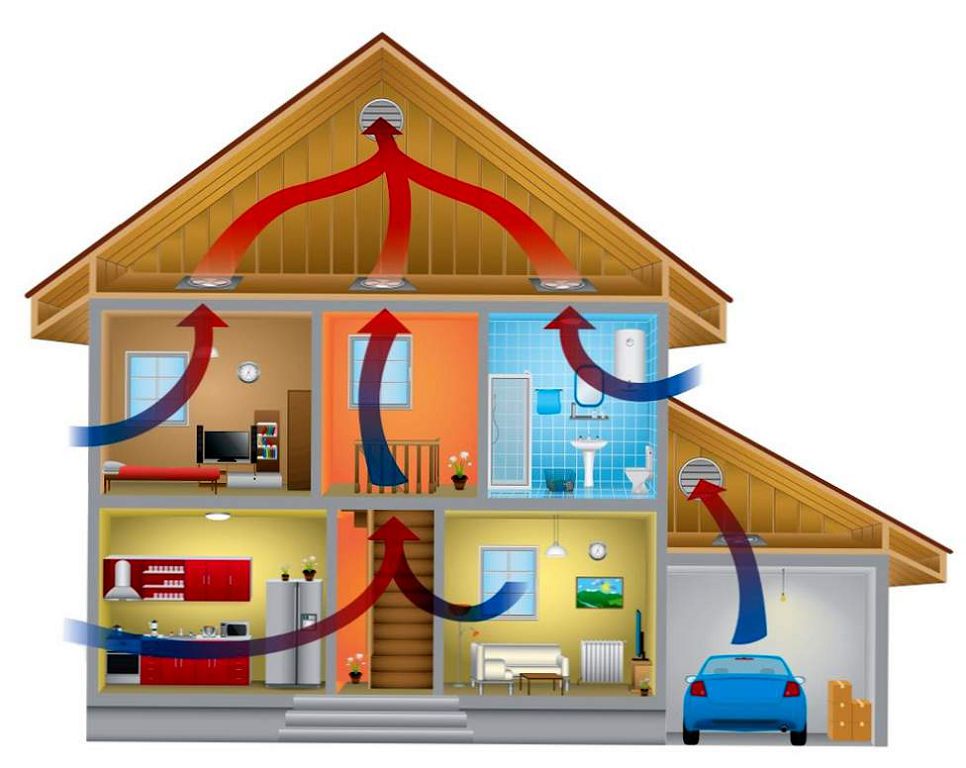Owners of private houses often believe that the construction of ventilation of the sewage system in a private house is necessary to eliminate unpleasant odors. In fact, this system is needed to prevent a vacuum in the sewage pipes.
Private house sewerage ventilation device
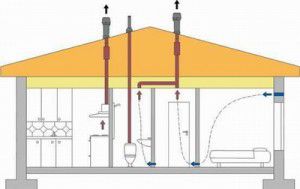
External ventilation of the sewage system of a private house is mounted from plastic sewer pipes:
- A pipe with a diameter of 100 - 150 mm is inserted into the drain pit hatch so that atmospheric precipitation does not penetrate into it;
- The second pipe with a diameter of 50 mm is inserted into the adapter. This uncomplicated system makes it possible to eliminate the stench from the sewer pit.
For several bathrooms, you can equip a common ventilation system. To prevent unpleasant odor from the drain pit from being sucked into the house through the siphons, the sewer pipe must have an exit through the roof to the street. The distance from the ground to the end of the pipe must be at least four meters. The effect of this measure:
- The stench does not spread throughout the house;
- The water locks are not violated;
- When the water is drained (regardless of the number of bathrooms and risers in the house), an air lock does not form in them.
The ventilation of a private house toilet is mounted from plastic pipes. They are simply fastened, lightweight and do not require special equipment to connect them. Therefore, any home master will cope with the installation.
To remove the pipe during construction, a ventilation duct is laid. The pipe can also be led out horizontally through the wall to the street. For ventilation of a toilet of a single-storey private house, a pipe diameter of 50 mm is sufficient, for two or more floors from 110 mm. If there are severe frosts in your area, the pipe should be insulated.
Vacuum valves are installed on each sewer riser.
Private house toilet and bathroom ventilation
Ventilation of the toilet in a private house can be carried out naturally or by force.
The second option allows the owners to control the action of the hood. A ventilation pipe is supplied to the toilet and bathroom, into which an exhaust fan is mounted. If the bathroom is adjacent to the outer wall of the house, you can do without a ventilation duct. The most common exhaust fan, which is purchased at a hardware store, will solve the problem of ventilation in the bathroom in a private house.
By connecting the fan to the light switch, the owner saves electricity. You can equip the system with a timer: after turning off the light, the hood will work for a specified number of minutes and turn off on its own. For ventilation in the bathroom in a private house, devices with a hygrostat are convenient: they turn on when the humidity in the room rises.

